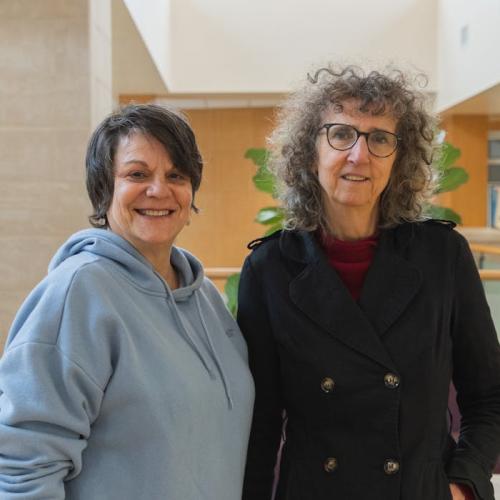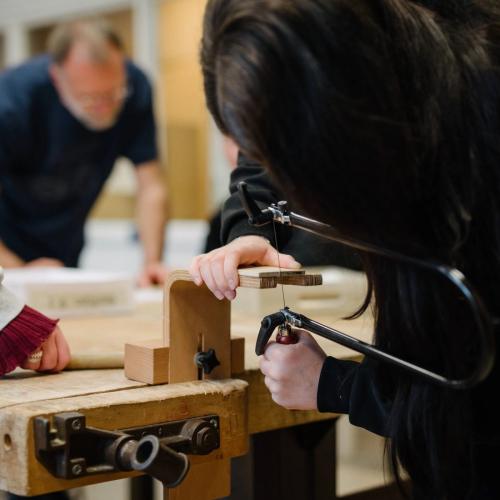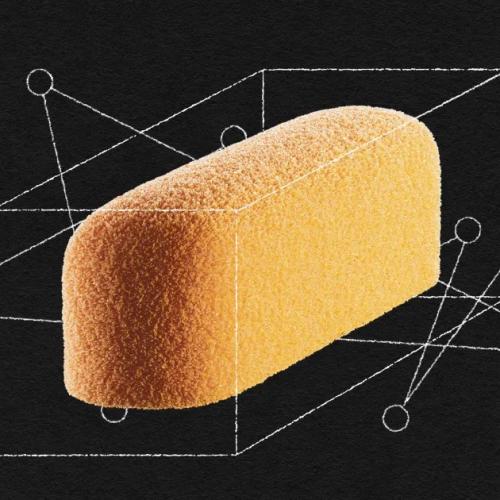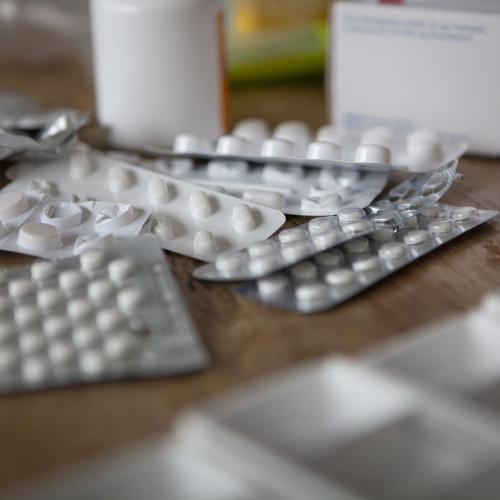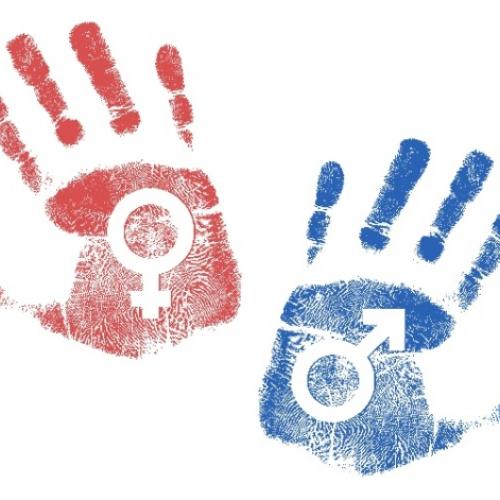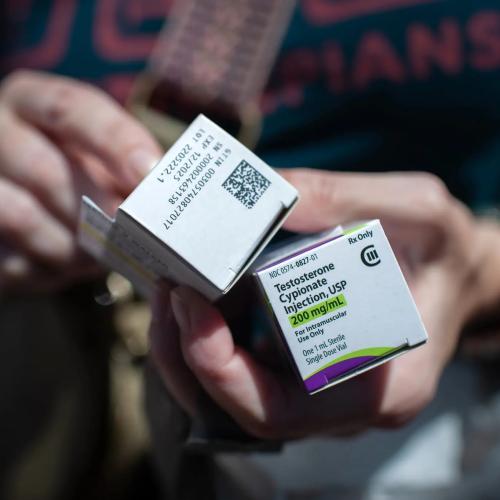Cancer Cures News Stories
Below are key excerpts of revealing news articles on cancer cures from reliable news media sources. If any link fails to function, a paywall blocks full access, or the article is no longer available, try these digital tools.
It was a small trial, just 18 rectal cancer patients, every one of whom took the same drug. But the results were astonishing. The cancer vanished in every single patient, undetectable by physical exam, endoscopy, PET scans or M.R.I. scans. Dr. Luis A. Diaz Jr. of Memorial Sloan Kettering Cancer Center, an author of a paper published Sunday in the New England Journal of Medicine describing the results ... said he knew of no other study in which a treatment completely obliterated a cancer in every patient. “I believe this is the first time this has happened in the history of cancer,” Dr. Diaz said. Dr. Alan P. Venook, a colorectal cancer specialist at the University of California, San Francisco, who was not involved with the study, said he also thought this was a first. A complete remission in every single patient is “unheard-of,” he said. These rectal cancer patients had faced grueling treatments — chemotherapy, radiation and, most likely, life-altering surgery that could result in bowel, urinary and sexual dysfunction. Some would need colostomy bags. They entered the study thinking that, when it was over, they would have to undergo those procedures because no one really expected their tumors to disappear. But they got a surprise: No further treatment was necessary. “There were a lot of happy tears,” said Dr. Andrea Cercek, an oncologist at Memorial Sloan Kettering Cancer Center and a co-author of the paper. Another surprise, Dr. Venook added, was that none of the patients had clinically significant complications.
Note: Will this amazing treatment be suppressed, like so many others before it? Explore a treasure trove of concise summaries of incredibly inspiring news articles which will inspire you to make a difference.
Bees may soon be able to take some of the sting out of cancer by detecting it early and getting patients into treatment sooner. Honeybees are known for their exquisitely sensitive sense of smell. They don't have noses, but their feet, tongues and antennae are packed with olfactory glands. They can also be quickly trained to do their "waggle dance" when they associate a specific smell with a food source. Taking advantage of these facts, Portuguese scientist Susana Soares has invented a two-chambered glass dome that uses bees to snuff out cancer. "The glass objects have two enclosures: a smaller chamber that serves as the diagnostic space and a bigger chamber where previously trained bees are kept for the short period of time necessary for them to detect general health," Soares wrote on her website. "People exhale into the smaller chamber, and the bees rush into it if they detect on the breath the odor that they were trained to target." Soares said she could train bees in 10 minutes to identify cancer and other diseases, such as tuberculosis and diabetes in their early stages. By exposing the insects to the odor molecules produced by an illness and then feeding them sugar, they learn to associate the smell with a food reward. Soares said that her bee chamber was an inexpensive, sustainable and highly accurate diagnostic tool. And, she points out, bees, as well as wasps, are already used regularly to sniff out land mines and illegal drugs.
Note: Explore a treasure trove of concise summaries of incredibly inspiring news articles which will inspire you to make a difference.
Dr. Seema Doshi was shocked and terrified when she found a lump in her breast that was eventually confirmed to be cancerous. “That rocked my world,” said Dr. Doshi, a dermatologist in private practice. “I thought, ‘That’s it. I will have to do chemotherapy.’” She was wrong. Dr. Doshi was the beneficiary of a quiet revolution in breast cancer treatment, a slow chipping away at the number of people for whom chemotherapy is recommended. Chemotherapy for decades was considered “the rule, the dogma,” for treating breast cancer and other cancers, said Dr. Gabriel Hortobagyi, a breast cancer specialist. But data from a variety of sources offers some confirmation of what many oncologists say anecdotally — the method is on the wane for many cancer patients. Genetic tests can now reveal whether chemotherapy would be beneficial. For many there are better options with an ever-expanding array of drugs, including estrogen blockers and drugs that destroy cancers by attacking specific proteins on the surface of tumors. And there is a growing willingness among oncologists to scale back unhelpful treatments. The result spares thousands each year from the dreaded chemotherapy treatment, with its accompanying hair loss, nausea, fatigue, and potential to cause permanent damage to the heart and to nerves in the hands and feet. The diminution of chemotherapy treatment is happening for some other cancers, too, including lung cancer.
Note: Explore a treasure trove of concise summaries of incredibly inspiring news articles which will inspire you to make a difference.
[Jim] Anderson is standing in an unassuming patch of woodland in Crystal Falls, in Michigan’s Upper Peninsula. He is revisiting an organism living under the forest floor that he and his colleagues discovered nearly 30 years ago. This is the home of Armillaria gallica, a type of honey mushroom. When Anderson and his colleagues visited Crystal Falls in the late 1980s, they discovered that what at first appeared to be a rich community of Armillaria gallica flourishing beneath the mulch of leaf litter and top soil of the forest floor was – in fact – one giant individual specimen. They estimated it covered an area about 91 acres, weighed 100 tonnes and was at least 1,500 years old. Analysis produced [a] surprising insight, one that could help us humans in our fight against ... cancer. The Canadian researchers discovered what may be the secret behind the Armillaria gallica’s extraordinary size and age. It appears the fungus has an extremely low mutation rate – meaning it avoids potentially damaging alterations to its genetic code. As organisms grow, their cells divide into two to produce new daughter cells. Over time, the DNA in the cells can become damaged leading to errors, known as mutations, creeping into the genetic code. This is thought to be one of the key mechanisms that causes aging. But it seems the Armillaria gallica in Crystal Falls might have some inbuilt resistance to this DNA damage.
Note: Explore a treasure trove of concise summaries of incredibly inspiring news articles which will inspire you to make a difference.
Doctors have used ultrasound to successfully treat prostate cancer in a new study promising a new alternative to surgery. Prostate is the second most deadly type of cancer in men, with lung cancer the only variant to claim more lives. Treatment is challenging because surgery and radiation can leave men incontinent or impotent. However, a pioneering new technique avoids the risks by using a rod-shaped device inserted into the urethra while guided by magnetic resonance to administer precise bursts of ultrasound. The sound waves heat and destroy the tumour, leaving surrounding areas unharmed. The new study was presented at the annual meeting of the Radiological Society of North America and involved 115 men with localised prostate cancer. After treatment with ultrasound, clinically significant cancer was eliminated in 80 per cent of the group, with 65 per cent having no signs of cancer after one year. Most of the men also saw reduced blood-antigen markers for prostate cancer, and overall no bowel complications were reported. Study co-author Steven Raman, professor of radiology and urology at the University of California at Los Angeles, said: Its an outpatient procedure with minimal recovery time. We saw very good results in the patients, with a dramatic reduction of over 90 per cent in prostate volume and low rates of impotence with almost no incontinence. The process, called Tulsa-Pro, has been approved for clinical use in Europe.
Note: Why isn't this exciting new development approved or even reported in the US? And learn about a man who developed a similar treatment almost a century ago only to have it quashed by the medical establishment.
Scientists have created a new cowpox-style virus in a bid to cure cancer. The treatment, called CF33, can kill every type of cancer in a petrie dish and has shrunk tumours in mice, The Daily Telegraph reported. US cancer expert Professor Yuman Fong is engineering the treatment, which is being developed by Australia biotech company Imugene. They are hoping the treatment will be tested on breast cancer patients, among other cancer sufferers, next year. Professor Fong is currently in Australia to organise the clinical trials, which will also be run overseas. Patients with triple negative breast cancer, melanoma, lung cancer, bladder, gastric and bowel cancer would be tested in the 'basket study'. The virus, which causes the common cold, was turned into a treatment for brain cancer by scientists in the US. The cancer in some patients disappeared for years before it came back, while others saw tumours shrink considerably. Similarly, a form of the cold sore virus called Imlygic or T-Vec was found to be able to treat melanoma, as it helped the body's immune system recognise and destroy tumours and melanoma cells in the body. Cancer patients would have the engineered virus injected directly into their tumours for the breakthrough treatment. It's hoped the virus would infect the cancer calls and make them explode. The immune system is then expected to be alerted about other cancer cells in the body, prompting the diseased cells to be killed.
Note: For more along these lines, see concise summaries of deeply revealing news articles on promising cancer research from reliable major media sources.
A small team of Israeli scientists is telling the world they will have the first complete cure for cancer within a year, The Jerusalem Post reported. And not only that, but they claim it will be brief, cheap and effective and will have no or minimal side-effects. We believe we will offer in a years time a complete cure for cancer, said Dan Aridor, chairman of the board of Accelerated Evolution Biotechnologies Ltd. (AEBi), a company founded in 2000 in ... Ness Ziona, Israel. A development-stage biopharmaceutical company engaged in discovery and development of therapeutic peptides, AEBi developed the SoAP platform, a combinatorial biology screening platform technology, which provides functional leadsagonist, antagonist, inhibitor, etc. - to very difficult targets. Called MuTaTo (multi-target toxin), researchers said the drug is essentially "on the scale of a cancer antibiotic a disruption technology of the highest order." Aridor told The Jerusalem Post: Our cancer cure will be effective from day one, will last a duration of a few weeks and will have no or minimal side-effects at a much lower cost than most other treatments on the market. Our solution will be both generic and personal. Currently in development ... the potential game-changer in the world-wide fight against cancer will use a combination of cancer-targeting peptides and a toxin that will specifically kill cancer cells. Every sixth death in the world is due to cancer, making it the second leading cause of death, second only to cardiovascular disease.
Note: Yet even in this article the attacks on these scientists have already begun. The cancer industry does not want to lose literally billions of dollars in profits. For more on this, see the Royal Rife story. For more along these lines, see concise summaries of deeply revealing major media news articles on other cancer treatments with high promise which were suppressed.
You can protect yourself from cancer by eating organic. Those who frequently eat organic foods lowered their overall risk of developing cancer, a study published Monday in JAMA Internal Medicine finds. Specifically, those who primarily eat organic foods were more likely to ward off non-Hodgkin lymphoma and postmenopausal breast cancer compared to those who rarely or never ate organic foods. A team of researchers looked at the diets of 68,946 French adults. More than three-quarters of the volunteers were women, in their mid-40s on average. Comparing the participants' organic food scores with cancer cases, the researchers calculated a negative relationship between high scores (eating the most organic food) and overall cancer risk. Those who ate the most organic food were 25% less likely to develop cancer. Specifically, they were 73% less likely to develop non-Hodgkin lymphoma and 21% less likely to develop post-menopausal breast cancer. Even participants who ate low-to-medium quality diets yet stuck with organic food experienced a reduced risk of cancer, the authors found. The authors theorize a "possible explanation" for the negative relationship between organic food and cancer risk stems from the "significant" reduction of contamination that occurs when conventional foods are replaced by organic foods. The new findings are consistent with those of the International Agency for Research in Cancer, which found pesticides are cancer causing in humans
Note: For more along these lines, see concise summaries of deeply revealing news articles on food corruption from reliable major media sources. Then explore the excellent, reliable resources provided in our Health Information Center.
A vaccine injected into a tumor triggers the immune system to kill cancer, a new study in mice confirms. Stanford researchers have now begun seeking human patients who want to help test this approach. The research behind this potential new cancer treatment was published Wednesday in Science Translational Medicine. Cancer vaccines work a bit differently than a vaccine against the measles or the flu. Those shots are meant to train an immune system to target an infection before the virus or bacteria arrives. Cancer vaccines, however, are given after a person is diagnosed. This shot ... combines two components: a short piece of DNA molecules that can stimulate the immune system to create greater quantities of a receptor called OX40 and a protein that sticks to those receptors, prompting the immune cells to attack the tumor. [Study co-author Dr. Ronald Levy] and his colleagues tested their vaccine in more than 90 mice, some with a tumor transplanted into them and others that were genetically primed to develop cancer. However, the next step in this research will go well beyond mice. Levy and his colleagues have begun looking for about 15 people with lymphoma to test the vaccine in a clinical trial. If the trials are successful, he believes it could help people with a wide variety of cancers. I dont think theres a limit to the type of tumor we could potentially treat, as long as it has been infiltrated by the immune system, he stated.
Note: For more on this exciting development, see this article. Then see concise summaries of deeply revealing news articles on promising cancer treatments and health.
High doses of vitamin C injected into the blood stream could prove effective in treating cancer, according to new research. Scientists said vitamin C infusions, which were up to 1,000 times higher than recommended intake levels, selectively targeted tumour cells in cancer patients. This increased the rates of cell deaths and sensitised them to radiation and chemotherapy. The treatment also appeared to be safe, producing mild side effects such as frequent bathroom trips and a dry mouth. Eleven brain cancer patients were given three infusions of vitamin C a week for two months followed by a further two per week for seven months while receiving standard radiotherapy and chemotherapy. Tests showed that iron in their tumours reacted with the vitamin to form highly reactive and destructive free radical hydrogen peroxide molecules. The free radicals were thought to cause selective DNA damage in cancerous, but not healthy, cells. This in turn was expected to lead to enhanced cancer cell death as well as sensitisation to radiation and chemotherapy drugs. US researcher Dr Garry Buettner, from the University of Iowa, said: This paper reveals a metabolic frailty in cancer cells that is based on their own production of oxidizing agents that allows us to utilise existing redox active compounds, like vitamin C, to sensitise cancer cells to radiation and chemotherapy. The safety study sets the stage for larger Phase II trials investigating whether high-dose vitamin C injections can extend the lifespan of cancer patients.
Note: This study was published in the journal Cancer Cell. For more along these lines, see concise summaries of deeply revealing news articles on promising cancer research.
Dr. Hadiyah-Nicole Green is one of fewer than 100 black female physicists in the country, and the recent winner of $1.1 million grant to further develop a technology shes pioneered that uses laser-activated nanoparticles to treat cancer. Green, who lost her parents young, was raised by her aunt and uncle. While still at school, her aunt died from cancer, and three months later her uncle was diagnosed with cancer, too. Green went on to earn her degree in physics at Alabama A&M University, being crowned Homecoming Queen while she was at it, before going on full scholarship to University of Alabama in Birmingham to earn her Masters and Ph.D. There Green would become the first to work out how to deliver nanoparticles into cancer cells exclusively, so that a laser could be used to remove them, and then successfully carry out her treatment on living animals. As she takes on her growing responsibilities, Green still makes time to speak at schools, Boys & Girls Clubs and other youth events. Young black girls dont see those role models (scientists) as often as they see Beyonce or Nicki Minaj, says Green. Its important to know that our brains are capable of more.
Note: Explore a treasure trove of concise summaries of incredibly inspiring news articles which will inspire you to make a difference.
As a physician, I have encountered many people who believe that heart disease, which is the single biggest cause of death among Americans, is largely controllable. After all, if people ate better, were physically active and stopped smoking, then lots of them would get better. This ignores the fact that people cant change many risk factors of heart disease like age, race and family genetics. People dont often seem to feel the same way about cancer. They think its out of their control. A ... recent study published in Nature argues that there is a lot we can do. Many studies have shown that environmental risk factors and exposures contribute greatly to many cancers. Diet is related to colorectal cancer. Alcohol and tobacco are related to esophageal cancer. HPV is related to cervical cancer, and hepatitis C is related to liver cancer. And youd have to be living under a rock not to know that smoking causes lung cancer and that too much sun can lead to skin cancer. Using sophisticated modeling techniques, the researchers argued that less than 30 percent of the lifetime risk of getting many common cancers was because of intrinsic risk factors, or the bad luck. The rest were things you can change. [More] recently, in JAMA Oncology, researchers sought to quantify how a healthful lifestyle might actually alter the risk of cancer. They [found that] about 25 percent of cancer in women and 33 percent in men was potentially preventable.
Note: Explore a treasure trove of concise summaries of incredibly inspiring news articles which will inspire you to make a difference.
High-dose vitamin C can boost the cancer-killing effect of chemotherapy in the lab and mice, research suggests. Given by injection, it could potentially be a safe, effective and low-cost treatment for ovarian and other cancers. US scientists ... call for large-scale government clinical trials. Vitamin C has long been used as an alternative therapy for cancer. In the 1970s, chemist Linus Pauling reported that vitamin C given intravenously was effective in treating cancer. However, clinical trials of vitamin C given by mouth failed to replicate the effect, and research was abandoned. It is now known that the human body quickly excretes vitamin C when it is taken by mouth. However, scientists at the University of Kansas say that when given by injection vitamin C is absorbed into the body, and can kill cancer cells without harming normal ones. The researchers injected vitamin C into human ovarian cancer cells in the lab, into mice, and into patients with advanced ovarian cancer. They found ovarian cancer cells were sensitive to vitamin C treatment, but normal cells were unharmed. The treatment worked in tandem with standard chemotherapy drugs to slow tumour growth. "Because vitamin C has no patent potential, its development will not be supported by pharmaceutical companies," said lead researcher Qi Chen. "We believe that the time has arrived for research agencies to vigorously support thoughtful and meticulous clinical trials with intravenous vitamin C."
Note: Read more about this amazing cancer research. For more along these lines, see concise summaries of deeply revealing news articles on promising cancer research that has been suppressed by the medical industry.
The phrase cancer screening saves lives is ... familiar to most consumers of public service announcements. But that advice may be misleading. The ubiquitous adage ... fails to take into account deaths linked to factors related to the screening itself. For example, prostate cancer screening is known to return numerous false positives, writes Vinay Prasad, an assistant professor at Oregon Health and Science University, and contributes to over 1 million prostate biopsies a year. The procedure is associated with serious harms, including admission to hospital and death. Whats more, men diagnosed with prostate cancer are more likely to have a heart attack or commit suicide in the year after diagnosis, he writes. A similar case can be made for breast cancer screening. Fully 60 percent of women who get regular mammograms for 10 years have been handed a false positive result at some point. Being told you have breast cancer - even if it turns out that the test result was incorrect - has been associated with psychosocial distress as great as a breast cancer diagnosis. A massive study of 90,000 women over 25 years found that the regular screening did not change the womens death rates. In fact, if anything, the screenings harmed some women: Out of every five cancers detected with the technology and treated, one was not a threat to the womans health and did not need treatment such as chemotherapy, surgery or radiation, all of which can cause serious side effects.
Note: Read more about routine over-diagnosis and unnecessary treatment of cancer in this New York Times article. And learn about the promising cancer research that has been largely suppressed by the medical-industrial complex. For more, see concise summaries of deeply revealing health news articles from reliable major media sources. Then explore the excellent, reliable resources provided in our Health Information Center.
In late 2012, Brice Royer was lying on a bed in terrible pain, thinking about how to kill himself. Today, the pain is still there and the malignant tumour in his stomach is no smaller. But he has never been happier. A year ago, Royer, 31, decided to give and receive freely without the use of money in an effort to build community. Thinking he was staring down a death sentence, Royer [researched] and reflect on the causes of illness. Toxins in the environment. Loneliness. Stress. The root cause (is) a lack of love in our society, Royer says. A lot of the problems that we have today - anything from the housing crisis in Vancouver, how expensive things are, to working at a stressful job, making ends meet and not having much time to have community or friends - all these things I feel led to a lot of health problems and in my case, can aggravate cancer. Royer researched where the healthiest people in the world live and the lifestyle they practise. They all take care of each other. They all have big families and small communities and they all have something called the gift economy. They are isolated from the market economy, Royer explains. [He] suggested to a friend that they practise this within their own circle using a Facebook group. True to philosophy, he offered to pay someone elses rent ... for a year instead of his own. The woman he helped was a chronically ill single mother. The biggest payoff, he says, is the community hes built and the love and support he gets from friends.
Note: Explore a treasure trove of concise summaries of incredibly inspiring news articles which will inspire you to make a difference.
His body ravaged by chemotherapy treatments, retired radio engineer John Kanzius spent months in his basement in 2003 cobbling together a makeshift tumor-killing machine. Kanzius had no medical background. He had been a ham radio operator and the owner of a television and radio station company. But he had leukemia, and he did not want to die. He did not know it then, but the John Kanzius's Noninvasive Radiowave Cancer Device ... would eventually make the pages of respected medical journals and attract the support of leading cancer researchers. Dr. Steven A. Curley, an oncologist ... launched Kanziuss research into the national spotlight and devoted his career to the project. Curley had treated many cancer patients, but [grew] particularly close with Kanzius. In 2009, Kanzius died at 64 from pneumonia while undergoing chemotherapy. Many thought the Kanzius machine would die with him. But this May, Curley filed protocols with the Italian Ministry of Health to test the radio wave machine on humans diagnosed with pancreatic and liver cancer. Researchers from the University of Pittsburgh, the MD Anderson Cancer Center and Rice University tested the technology [on] human cancer cells in petri dishes, as well as into tumors in mice, rats, rabbits and pigs. Using the Kanzius machine, they were able to heat [injected] nanoparticles and, as a result, kill all those cancerous cells [while surrounding healthy areas remained intact]. Results were published in the oncology medical journal Cancer, as well as Nano Research.
Note: Learn more about promising cancer treatments that are emerging and why these are frequently overlooked. Explore a treasure trove of concise summaries of incredibly inspiring news articles which will inspire you to make a difference.
In a new study, researchers found that breast-cancer patients who had high levels of vitamin D were twice as likely to survive [as] women with low levels. They reviewed five studies that observed more than 4,440 women. “The study has implications for including vitamin D as an adjuvant to conventional breast cancer therapy,” study co-author Dr. Heather Hofflich, an associate professor of medicine at the University of California San Diego, said in a press release. The researchers recommend that vitamin D should be added to the various treatments given to women fighting breast cancer. The body naturally produces vitamin D when exposed to sunlight, but milk, fatty fish and other foods can also boost production. Patients could also take vitamin D supplements.
Note: This is huge news! Why isn't this exciting development getting more press coverage? Read numerous major media articles revealing potential cancer cures which have received little attention. And see an informative article with more on the Vitamin D connection.
A common virus that is harmless to people can destroy cancerous cells in the body and might be developed into a new cancer therapy, US researchers said. The virus, called adeno-associated virus type 2, or AAV-2, infects an estimated 80 percent of the population. "Our results suggest that adeno-associated virus type 2, which infects the majority of the population but has no known ill effects, kills multiple types of cancer cells yet has no effect on healthy cells," said Craig Meyers, a professor of microbiology and immunology at the Penn State College of Medicine in Pennsylvania. "We believe that AAV-2 recognizes that the cancer cells are abnormal and destroys them. This suggests that AAV-2 has great potential to be developed as an anti-cancer agent," Meyers said in a statement. AAV-2 is a small virus that cannot replicate itself without the help of another virus. But with the help of a second virus it kills cells. For their study, Meyers and colleagues first infected a batch of human cells with HPV, some strains of which cause cervical cancer. They then infected these cells and normal cells with AAV-2. After six days, all the HPV-infected cells died. The same thing happened with cervical, breast, prostate and squamous cell tumor cells. "One of the most compelling findings is that AAV-2 appears to have no pathologic effects on healthy cells," Meyers said. "So many cancer therapies are as poisonous to healthy cells as they are to cancer cells. A therapy that is able to distinguish between healthy and cancer cells could be less difficult to endure for those with cancer."
Note: For more on promising cancer cures, see the deeply revealing reports from reliable major media sources available here.
Sixteen-year-old Jack Andraka's innovative mind led him to create a new way to detect pancreatic, ovarian and lung cancer. "I created a new way to detect pancreatic, ovarian and lung cancer that costs three cents and takes five minutes to run," he said. After a close friend died from pancreatic cancer, this 16-year-old from Crownsville, Maryland, unleashed his hyper-drive intellect on preventing more cancer deaths. "It's 168 times faster, over 26,000 times less expensive, and over 400 times more sensitive than our current methods of diagnosis," he said. Tinkering in his room and using information readily available online, he came up with a new way to detect cancer. "85 percent of all pancreatic cancers are diagnosed late, when someone has less than a two percent chance of survival. And our current test costs $800 per test and misses 30 percent of all pancreatic cancers," he said. He won last year's Intel International Science and Engineering Fair. The sweet validation came with $100,000 in scholarships, but Jack Andraka's got his eye on even bigger things. "The name of the competition is called the Tricorder XPRIZE," he said. "It's a $10 million prize. Essentially what you have to do is develop something the size of a smartphone that you scan over your skin and it will diagnose any disease instantly." Jack is fielding a team of other high-schoolers to compete against 300 teams of adult scientists and corporations in the Qualcomm Tricorder XPRIZE competition. He says youth is an advantage -- that new eyes are more likely to solve old problems.
Note: Let's hope this invention gets fast tracked and makes it to market. Notice how little attention this exciting development received. To read about many potential cancer cures reported in major media which have not made it to market for financial reasons, click here. For a treasure trove of great news articles which will inspire you to make a difference, click here.
A group of experts advising the nations premier cancer research institution has recommended changing the definition of cancer and eliminating the word from some common diagnoses as part of sweeping changes in the nations approach to cancer detection and treatment. The recommendations, from a working group of the National Cancer Institute, were published [in] The Journal of the American Medical Association. They say, for instance, that some premalignant conditions, like one that affects the breast called ductal carcinoma in situ, which many doctors agree is not cancer, should be renamed to exclude the word carcinoma so that patients are less frightened and less likely to seek what may be unneeded and potentially harmful treatments that can include the surgical removal of the breast. The group, which includes some of the top scientists in cancer research, also suggested that many lesions detected during breast, prostate, thyroid, lung and other cancer screenings should not be called cancer at all but should instead be reclassified as IDLE conditions, which stands for indolent lesions of epithelial origin. The impetus behind the call for change is a growing concern among doctors, scientists and patient advocates that hundreds of thousands of men and women are undergoing needless and sometimes disfiguring and harmful treatments for premalignant and cancerous lesions that are so slow growing they are unlikely to ever cause harm. Once doctors and patients are aware a lesion exists, they typically feel compelled to biopsy, treat and remove it, often at great physical and psychological pain and risk to the patient.
Note: Isn't it interesting that a diagnosis which might not even be accurate can so change a person's life? For more on promising cancer cures which are being suppressed by the medical-industrial complex, see the deeply revealing reports from reliable major media sources available here.
Important Note: Explore our full index to revealing excerpts of key major media news stories on several dozen engaging topics. And don't miss amazing excerpts from 20 of the most revealing news articles ever published.







